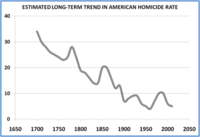-
U.S. launches campaign to combat recruitment of young Americans by militant groups

The White House, Justice Department (DOJ), DHS, and the National Counterterrorism Center have formed an alliance to combat the recruitment of young Americans to join militant groups like the Islamic State (IS) and Somali-based al-Shabaab.Officials have not released details on the network of community partnerships but local law enforcement officials, religious leaders, teachers, mental health professionals, and parents are expected to help monitor at-risk youths.
-
-
Muslim-majority countries can become liberal democracies
A new study suggests that Islam is not as much of an impediment to liberal democracy as is often thought. The researchers used data from the World Values Survey — a global research project that explores people’s values and beliefs, how they change over time, and what social and political impact they have. They found that people living in Muslim-majority countries are on average less tolerant than people living in the West – but that a significant part of the reason for this difference is that Muslim-majority countries tend to be less economically developed and more economically unequal than Western countries.
-
-
Islam’s silent majority: moderate voices drowned out by extremists
Stretching from North Africa to east Asia, many Muslims are engaged in a life-and-death tussle with extremists who are bent on extinguishing the diversity of opinions within the Muslim community. The reality, however, is that there exists more than one Islamic faith. Islam is an umbrella term, which covers multiple differences within the religion. Diversity of opinion is not a recent feature of Islam; evidence of broad shades of opinion can be traced back to its origins. But today the global Salafist movement, funded greatly by the Saudi regime and other sources, publicly occupies most of the Muslim world and parts of Muslim communities in the West. Islam should not be considered from the perspective of fundamentalism as, in the end, this will strengthen the extremists’ position. Rather, it should be understood by opening a dialogue, supporting, and co-operating with the moderates who offer a different understanding of Islam.
-
-
James Foley murder: inside the mind of Britain’s jihadists
As the murder of James Foley appears to have shown, foreign fighters are involved at the heart of the violence abroad — and understanding how they got there and what they might do on their return is an important task to which all carefully researched findings can contribute. There is a long history of people heading off to fight in foreign countries, and recent research has shown that, on balance, foreign fighters are more likely to be involved in high-risk conflicts. An important aspect of successfully recruiting foreign fighters is the creation of a wider communal identity and the sense of a threat to it — so Serbs versus Bosnians becomes Christians versus Muslims, and Assad versus protesters becomes false Muslims (or Alawites, or Shi’as) versus true (in this case, Sunni) Muslims. This process of highlighting the threat to the community and generating a sense of fear is especially effective in people who have a stronger identity to that community than they do to their state identity. So people who might be marginalized within their home countries might be more likely to leave those countries as the ties of state identity are weaker than the sense of duty to their transnational community.
-
-
What goes on in the mind of a militant extremist?
So far, the ongoing discussions about radicalization of extremists both at home and abroad have tended to emphasize its sociological aspects. These discussions have focused on concepts such as the religion and social environments of individuals. Psychological accounts of extremist activity are infrequent, and it is often forgotten that only a few of those who hold strong ideological, political, and religious views get involved in violent acts. Personal dispositions, feelings and beliefs may play a decisive role in explaining why people become radicalized. Psychological research into radicalization may thus complement political science and religious studies in countering terrorism in Western society. Monitoring the strength of militant extremist mindset endorsements in different communities could be helpful. It may be useful to establish regular polling practices that would gauge the extent of radicalization over time and in reaction to terrorist-related political acts at home and globally.
-
-
Crime rates affected by who has administrative, budgetary responsibility for prisons
In 2011, the U.S. Supreme Court forced California to deal with the massive overcrowding in its prison system. The resulting reform shifted administrative and budgetary responsibility for low-level criminals from the state prison system to county jails. As a result, local California jails now face more overcrowding than ever, and local law enforcement is saddled with additional costs for imprisoning arrestees. In Israel, the trend has been in the opposite direction: an administrative reform which transferred authority over jails from the police to the Prison Authority resulted in the police sending more people to jail. A new study found that police are more inclined to issue arrests when prisons have administrative responsibility for detainees. The effect on crime: crime in Israel dropped as a result of the reform largely because the police — feeling less budgetary pressure — felt free to arrest more suspects, many of whom would have gotten off in the past with a warning.
-
-
Why hundreds of westerners are taking up arms in global jihad
The conflicts in Syria and Iraq are attracting many Westerners as jihadi fighters. The stereotype that these fighters are migrants who have struggled to find a place in their adopted societies is shattered upon viewing YouTube propaganda videos. The typical portrayal of a violent jihadi is as a brutal group member, wearing sinister ninja-style costumes, maintaining a lifestyle straight from the Dark Ages and determined to drag the world back there. This stereotype is far from reality. Salafism is a thoroughly modern phenomenon, one that materialized the abstract concepts of Islam into an actual political system to be implemented. Salafists use modern means such as the Internet, social media and other technology. Their language embraces modern concepts of freedom, liberation and equality, which are all foreign to traditional Islamic theology and jurisprudence. Salafists also strongly oppose the traditional Islamic seminaries and institutes. They see these as one of the major barriers to Islamic awakening. Jihadi Salafism promises its followers an attractive utopia that is certain to become reality with the application of strong will and assertive action. They see their battle as a fight for humanity and for a better world where purity and authenticity prevail. In this regard, they, like other utopian movements such as particular types of socialists and communists, have a clear strategy for changing the world.
-
-
Bad social policy, not ideology, is to blame for the Arab world’s downward spiral

Nothing symbolizes the sorry state of Arab politics more than the rise of ISIS. The Arab world at large appears to be fast descending into a political quagmire, only a few years after the euphoria of the so-called Arab Spring. The unravelling of old dictatorships in Libya, Tunisia, Egypt and Syria has opened up a Pandora’s box of sectarian, ethnic and tribal divisions, old fault lines that have persisted under the heavy hand of police states for the last century.
-
-
The real reason for a decline in violent crime

A scientific analysis of twenty million words recorded during 150 years of criminal trials at London’s Old Bailey reveals how changes in culture rather than law helped to reduce violent crime, according to a new study. “What we have been able demonstrate through analyzing the language used in court is that the decline in less serious forms of violence, such as assault, was not led by legislation or moments of dramatic change in the law, but by social attitudes,” says one of the authors.
-
-
Preventing ethnic violence: Full integration or full separation
What if we could use science to understand, accurately predict, and ultimately avoid, ethnic violence? A new study argues that the key to peace is either completely to integrate or completely separate people based on cultural, linguistic, and ethnic differences.
-
-
Human behavior studies offer helpful insights to airport security officers
A recent Sandia National Laboratories study offers insight into how a federal transportation security officer’s thought process can influence decisions made during airport baggage screening, findings which are helping the Transportation Security Administration (TSA) improve the performance of its security officers. The TSA-funded project focused on the impacts on threat detection when transportation security officers are asked to switch between the pre-check and standard passenger lanes.
-
-
Evaluating English-language jihadist magazine “Inspire”
In a recent in-depth analysis of Inspire magazine, researchers applied the information, motivation, and behavioral skills model (IMB) of behavior change, an empirically tested and widely applied model, and found that the online English-language jihadist publication created in Yemen used religious arguments, terroristic propaganda, and quotes from prominent American figures as tools to radicalize and recruit Western terrorists and promote a do-it-yourself approach to terrorism.
-
-
Making hunches better than 50-50 propositions
Detecting roadside bombs while in a moving vehicle; sensing impending danger based on something unusual at local café; deciding whether that object just launched off the coast is a missile or airliner — these are just a few of many scenarios where there is not a lot of time to make a decision, and where we have to rely on hunches. Hunches are 50-50 propositions, but U.S. Navy researchers want to know whether those facing the unexpected in the heat of battle can be trained to guess right more often than not.
-
-
Growing questions about TSA’s behavioral detection program
TSA has spent roughly $1 billion training thousands of “behavior detection officers” as part of theScreening of Passengers by Observation Techniques (SPOT) program. The purpose of SPOT is to identify facial and body expressions that signals terrorist activity. Psychologists – and the GAO – question the effectiveness of the program.“The common-sense notion that liars betray themselves through body language appears to be little more than a cultural fiction,” says one psychologist.
-
-
Too much too young? Teaching children about violent extremism
Dealing with the rise of homegrown terrorism has prompted governments to take novel approaches in combating such threats. The U.K. government, for example, has recently pushed for schools to teach children as young as four about the dangers of violent extremism. One counter-radicalization strategy adopted by the U.K. government is Prevent, which has been used effectively in British secondary schools. Prevent has in the past been viewed with suspicion, however, particularly by British Muslim communities, as Prevent funding has previously been tied directly to the number of Muslim schools in an area. What Australia can learn from the British example is ensuring that certain communities do not feel alienated. Instead, any attempts at education should focus on the problem of radicalization as a whole.
-
- All
- Regional
- Water
- Biometrics
- Borders/Immig
- Business
- Cybersecurity
- Detection
- Disasters
- Government
- Infrastructure
- International
- Public health
- Public Safety
- Communication interoperabillity
- Emergency services
- Emergency medical services
- Fire
- First response
- IEDs
- Law Enforcement
- Law Enforcement Technology
- Military technology
- Nonlethal weapons
- Nuclear weapons
- Personal protection equipment
- Police
- Notification /alert systems
- Situational awareness
- Weapons systems
- Sci-Tech
- Sector Reports
- Surveillance
- Transportation
Advertising & Marketing: advertise@newswirepubs.com
Editorial: editor@newswirepubs.com
General: info@newswirepubs.com
2010-2011 © News Wire Publications, LLC News Wire Publications, LLC
220 Old Country Road | Suite 200 | Mineola | New York | 11501
Permissions and Policies
Editorial: editor@newswirepubs.com
General: info@newswirepubs.com
2010-2011 © News Wire Publications, LLC News Wire Publications, LLC
220 Old Country Road | Suite 200 | Mineola | New York | 11501
Permissions and Policies
